Antoni Gaudí designed the church of the Sagrada Família as a “Bible of stone.” On the eastern-facing side, where the stained glass windows burn blue and green at sunrise, the Nativity façade depicts the joy of creation at Christ’s birth.

The western-facing side portrays the Passion. It forms a stark contrast with the exuberance of the Nativity: austere, harrowing, the Passion is supposed to feel “hard, bare, as if made of bones.” The supports resemble tensed muscles; above, they look like ribs. There is little to no decorative work; the figures are spare and anguished, save for a few—Pontius Pilate, the soldiers. These wear ghoulish grins. Shielding my gaze from the high sun, I’m particularly struck by the figure of Jesus on the cross. His gaunt body crowns the façade, while a cypress tree crowns the Nativity—a symbol of hospitality, which is supposed to represent the Tree of Life—encircled by birds to signify the souls that have attained salvation.
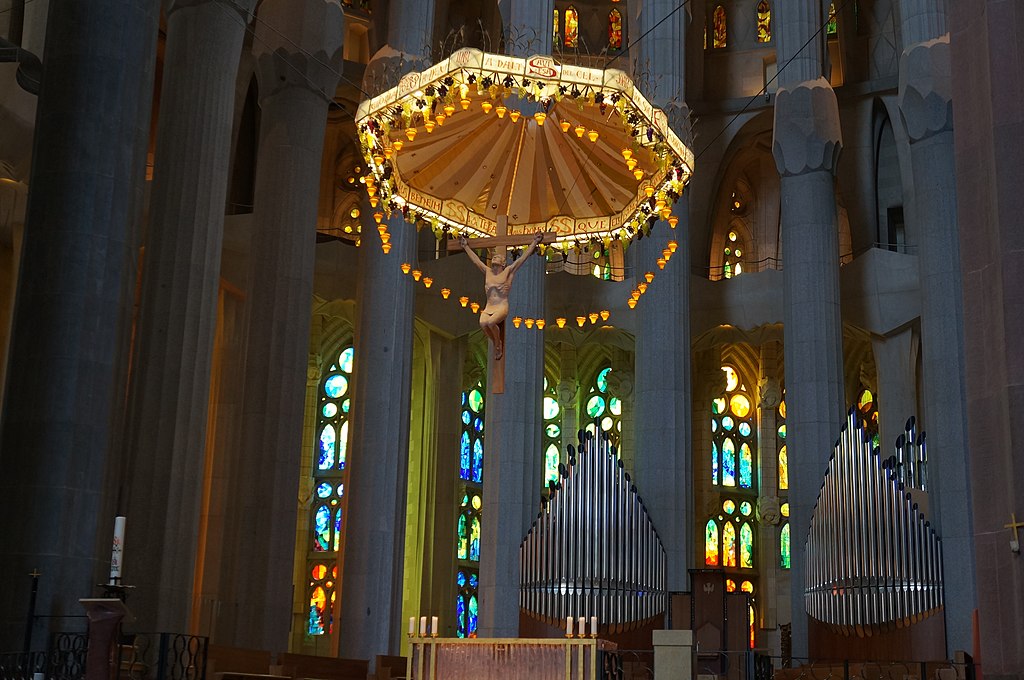
On the Nativity façade, one can find turtles, horses, doves. There are no such animals adorning the Passion. Gaudí’s meaning is clear: the world of nature rejoiced when Christ was born and it suffered alongside him when he died.

In the museum I read placards about Gaudí’s relationship to nature, which he described as his “true master.” What began as a childhood spent “contemplating the shapes and landscapes of the countryside” evolved into a lasting apprenticeship: Gaudí would study naturally-occurring geometrical forms in order to implement them in the structures of his buildings. He borrowed the hexagonal economy of a beehive to craft an iron grate; the pinnacle of an apse he sculpted according to the lavender bud. The ceiling at Casa Batlló obeys the Fibonacci sequence, and on the portico of the Passion façade, Gaudí opted for hyperbolic parabolas, with the base of the columns resembling tree trunks. Gaudí also applied the principle of helicoid plant growth to the columns in his buildings. The humble honeysuckle, for instance: its leaves grow in levels, with each new level rotating in order to obtain the maximum amount of sunlight without drowning the level below in shade. What if our world looked like that? What if each us turned aside at the top to provide those on the stair below room to ascend?
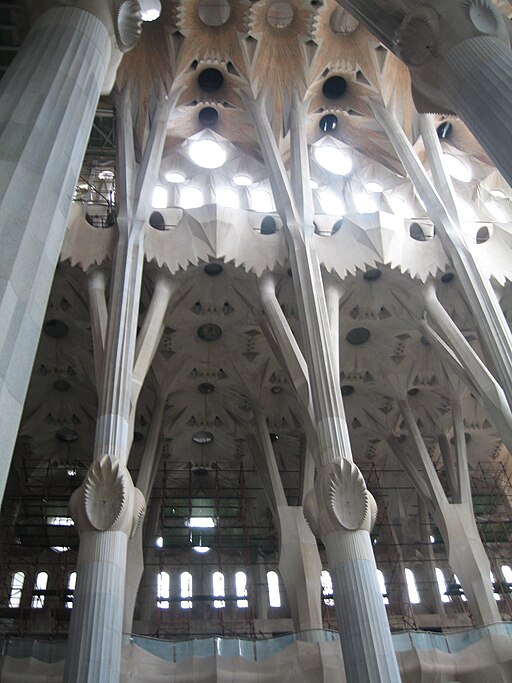
There are secrets and principles encased in nature, lying latent and waiting for the tender, patient eye. Simone Weil said that attention is a kind of love, a form of prayer, and ‘Abdu’l-Bahá claimed that art is worship: “when thy fingers grasp the paintbrush, it is as if thou wert at prayer in the Temple.” What better way to express love for God’s creation than to worship his work?
Palm fronds adorn the gate to Casa Vicens like open hands, while mosaics of seasonal fruit baskets crown the temples at the Sagrada Família. The oleander tree resolves a triangle into a hexagon and back again, prompting Gaudí to articulate his praise—not through pastels or words, music or a play, but with porphyry and basalt, granite and sandstone—the dark materials of a man who came to be known as “God’s architect.”
Gaudí turns to single-celled organisms, the building blocks of life itself, when constructing his windows: the intersecting hyperboloids allow more light in and better distribute it, just as cells—the embodiments of hunger—are designed to maximize efficiency when it comes to the ingestion of resources. When Gaudí does this, his work says, simply and resoundingly: “Thank you.”

In antiquity, nature was referred to as the Book of Laws. As the study of God’s creation, science—or natural philosophy as it was called—sought to understand God’s mind by ‘reading’ nature.
Bahá’u’lláh, imprisoned in the city of Akká towards the end of his life, said mournfully: “I have not gazed on verdure in nine years. The country is the world of the soul, the city is the world of bodies.”
As a child, Gaudí often took ill and spent long periods of time convalescing in bed. I wonder if that separation is what first aroused his thirst. I wonder whether from the window he longed for the teeming, reckless, beautiful, extravagant world below—crawling with insects, bursting with flowers, everything flashing in the sun and rustling in the breeze. Maybe his architecture was a way of abolishing that early distance. Maybe with his work he tried to express the ecstasy of reunion, saying not only “Thank you” but “Lord, where have you been? I’ve missed you.”


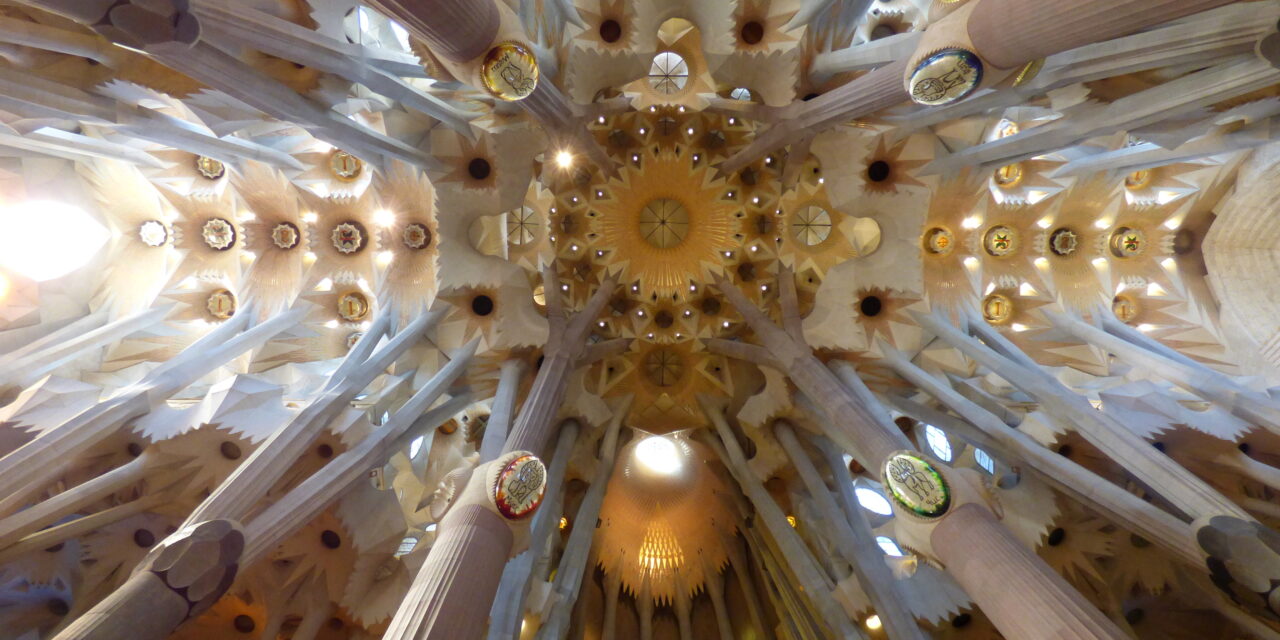

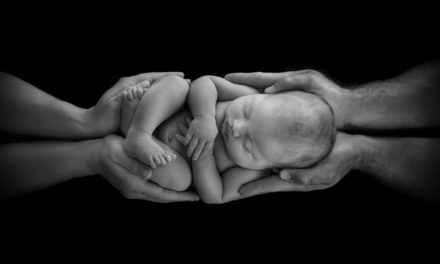
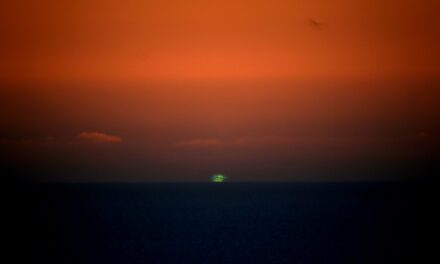


Thank you for this fascinating and illuminating reflection.
Thank you Lory! I’m glad to hear it resonated with you.